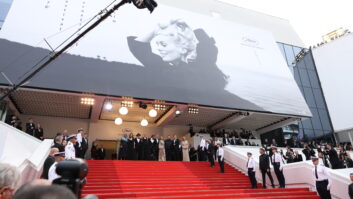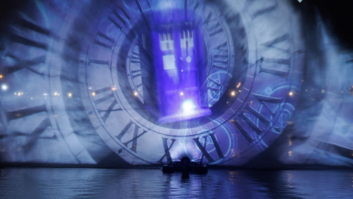
Voice control may increase the appeal of projection within both consumer and B2B sectors, says James Kirby, analyst with Futuresource Consulting.
Over the past three years more than 70 million VPA (virtual personal assistant)-enabled smart consumer devices – excluding mobile phones and PCs – have been shipped worldwide. Therefore it came as no surprise that one of the main themes of CES 2018 was voice-controlled assistance.
Up until now, projection has been well behind the curve in its adoption of additional consumer features. Nonetheless, in harmony with the show theme, multiple projector vendors announced VPA-enabled solutions at CES 2018.
Both new and traditional brands released VPA-enabled solutions at the show, demonstrating compatibility with Alexa by Amazon. Hisense, a brand relatively young in projection, was the first to announce this strategy pre-show, and in the following days, both Acer and Optoma released solutions. When this is combined with recent developments in 4K, HDR and laser, 2018 looks to be an increasingly pivotal year for specification-driven demand in home applications.
Convergence potential
The introduction of Alexa within Hisense’s line-up didn’t come as a huge surprise, especially considering its substantial investment in smart technology. However, the release of VPA compatibility by traditional brands symbolises the potential for rapid technological convergence within the volume areas of the industry. Acer, releasing support for Alexa in its 4K V6820M/I, demonstrates the potential for an entirely new concept of control for projection, one that could arguably lend itself to the relative complexity of projector usability.
The release of Optoma’s UHD51A at CES also marks a promising shift in home projection. It not only has Android, but also native VPA compatibility, bringing the future of home projection into closer alignment with general consumer buying behaviour. The prospect of this type of functionality creates demand on an individual product basis, but also plays part in breaking preconceptions of projectors being a legacy product. This in turn will create awareness for projection outside of the usual dedicated home cinema channel, allowing vendors to expand their target market beyond this point.
VPA compatibility by traditional brands symbolises the potential for rapid technological convergence within the volume areas of the industry
In terms of the overall CE market, technology in virtual assistance is moving much faster. VPA has shown integration with TVs, speakers, cars, wearables, robots, toys, even fridges, and much more. As well as this, the supporting tech and extent of control is far ahead of what has been released in projection so far. To access this vast market, projector vendors must comply or at least advance further towards the futuristic developments that excite consumers outside the dedicated home cinema market. With Google expected to increase its focus on VPA integration during 2018, the projection industry must continue to follow the trend of these CE giants.
B2B appeal
However, it is not in just home applications where this trend bears relevance. Many B2B end-users are also keen for the efficiencies, convenience, status and other benefits that voice AI can provide.
With both Acer and Optoma’s volume businesses located within the B2B market, this projector compatibility with Alexa could somewhat futureproof their production preceding the upcoming tide of VPA in the wider pro AV market. Interestingly, these releases also follow the creation last year of compatibility between Amazon Alexa and Crestron meeting room control, further increasing the temptation to adopt.
Despite it being the first VPA to projection, Alexa is not the sole driver of pro AV developments. Cisco’s Spark Assistant supplemented by its acquisition of MindMeld, along with Ricoh’s use of IBM Watson, are further demonstrating the application of voice control and AI. Such products not only have a place within corporate applications, but also represent much opportunity for education at all levels. AI software for adaptive learning, smart speakers and even humanoid robots are some of the other key opportunities for development here. However, these represent just a fraction of the VPA capabilities within the entire pro AV space.
Moving forward there will be decisions to make in relation to VPA integration and implementation options. However, it is already clear to most of the pro AV industry that voice will soon begin to make fundamental changes to technological requirements across many B2B verticals.







